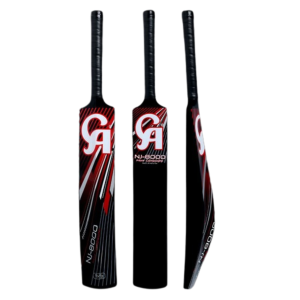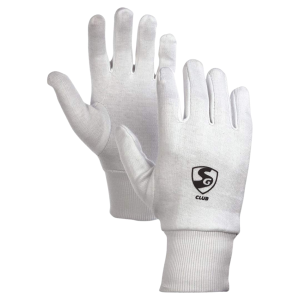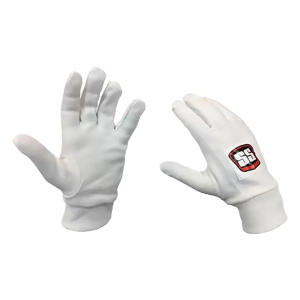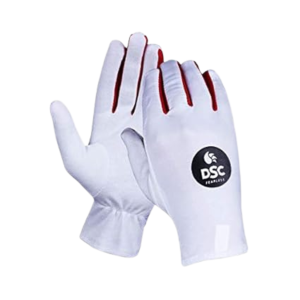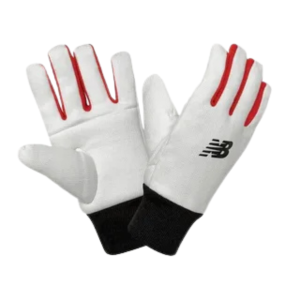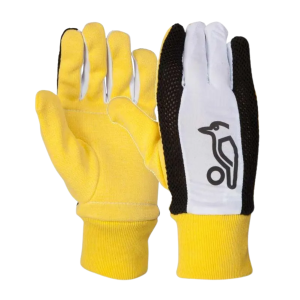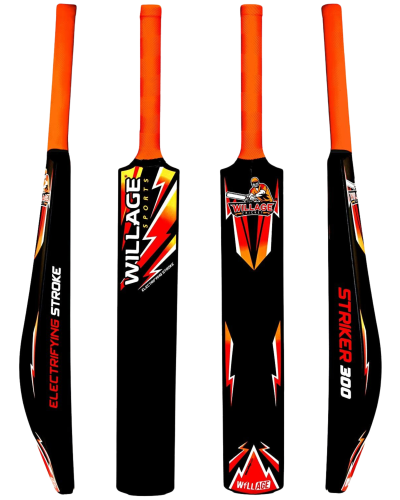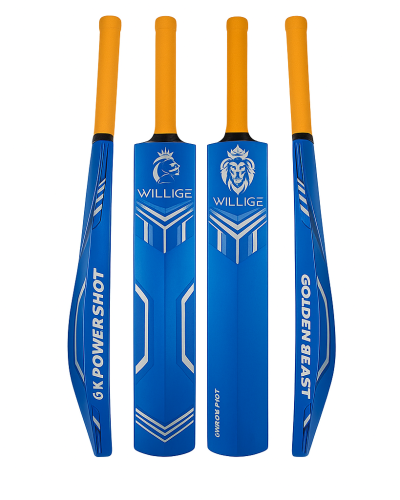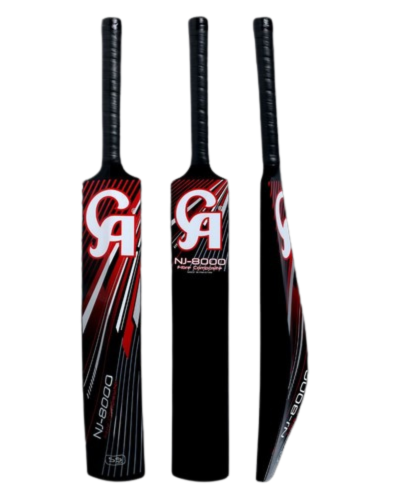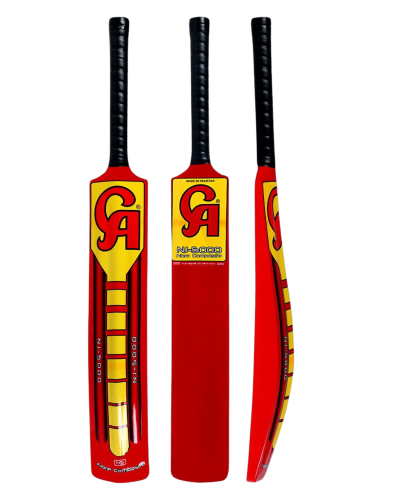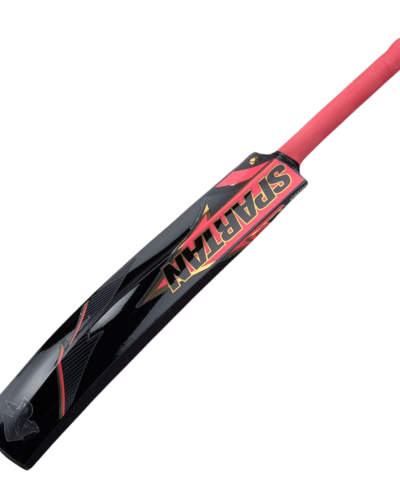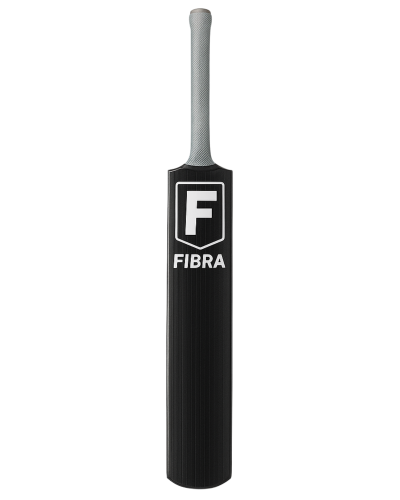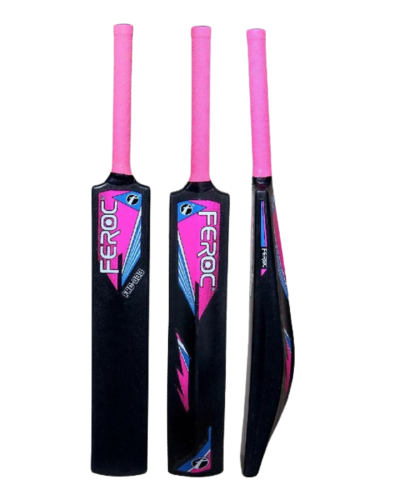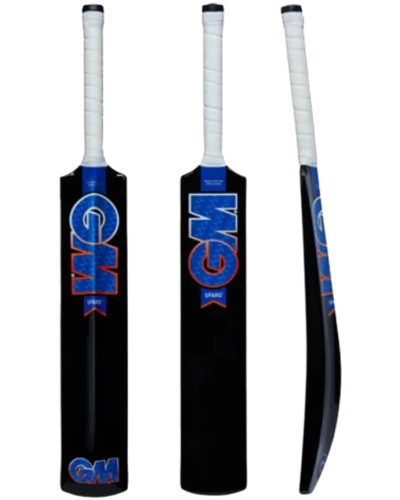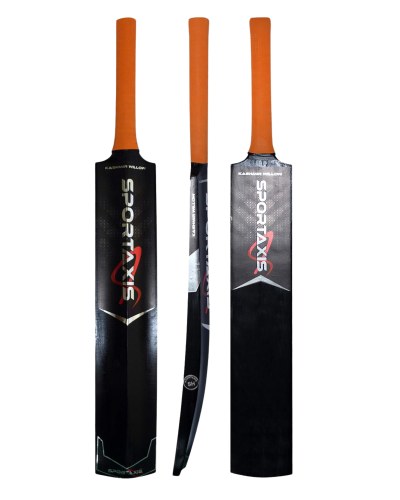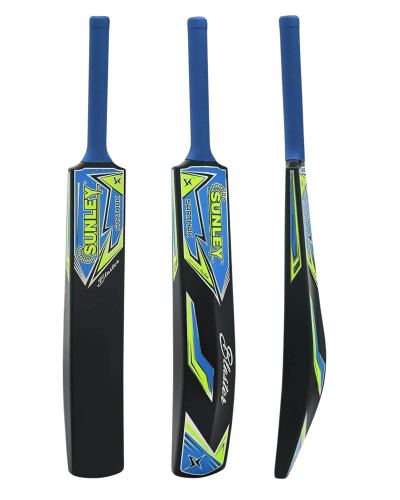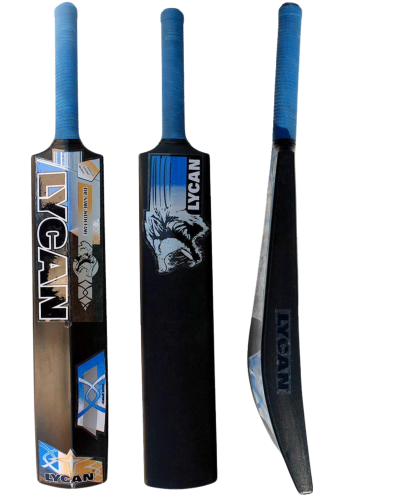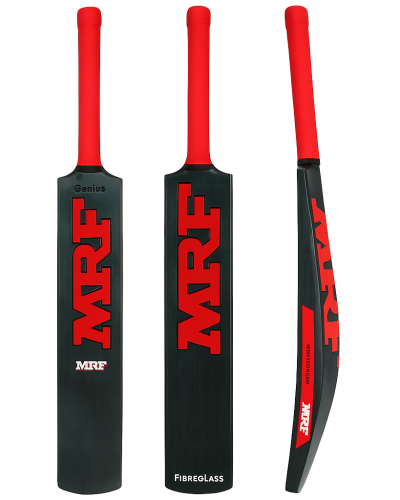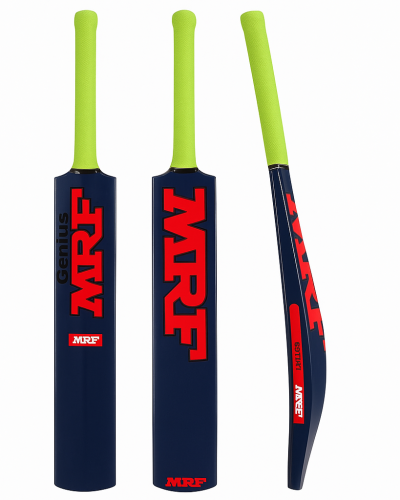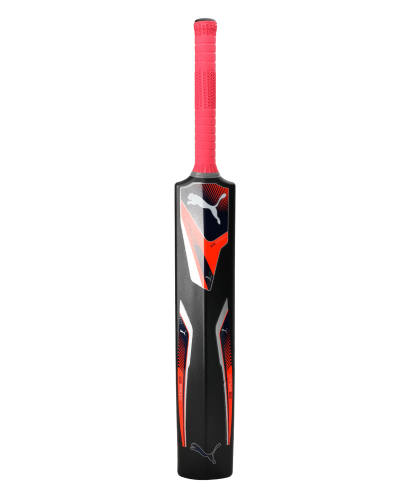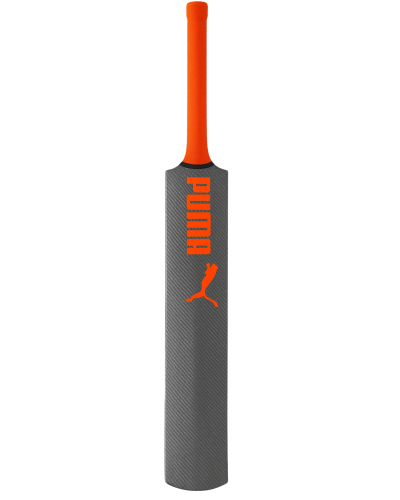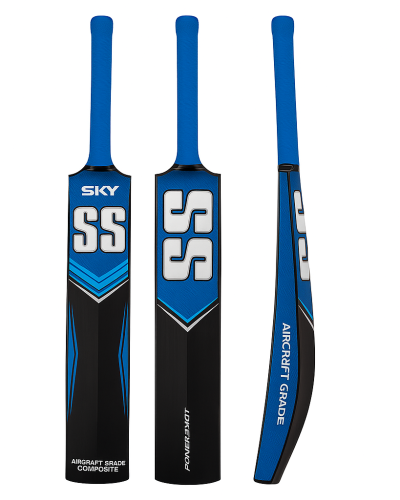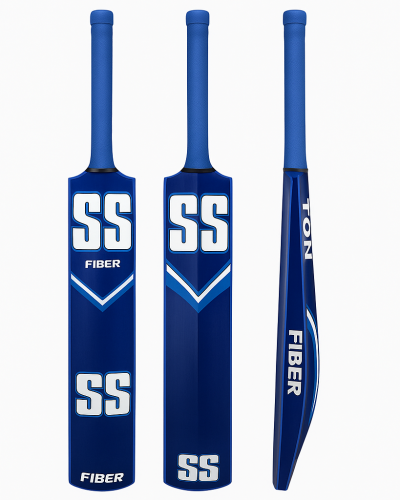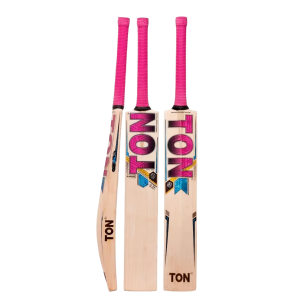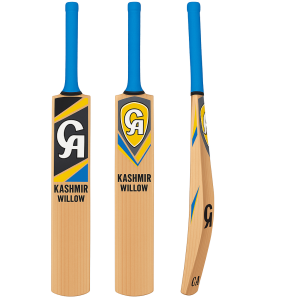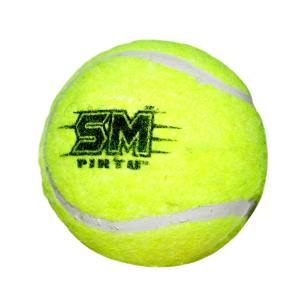- Home
- Cricket Bats
- Fiber Cricket Bats
Fiber Cricket Bats
Cricket bats have traditionally been made from high-quality willow, renowned for its lightness, durability, and performance. However, in recent years, fiber cricket bats have entered the scene, offering an alternative to the traditional wooden bats. Made from a blend of synthetic materials like carbon fiber and fiberglass, these bats are designed to provide durability, power, and performance. While they may not replace the classic wooden bat entirely, fiber cricket bats are increasingly becoming popular, especially among cricketers who want to experience the benefits of advanced materials and technology.
In this article, we will explore the features, benefits, types, and how fiber cricket bats are revolutionizing the sport, providing players with a new option to enhance their performance.
What is a Fiber Cricket Bat?
A fiber cricket bat is a modern innovation that uses materials like carbon fiber, fiberglass, or composite materials in the bat’s construction. These materials are used in conjunction with or as an alternative to traditional wood, making the bat lighter, more durable, and potentially more powerful.
The core design of a fiber cricket bat still retains some elements of traditional cricket bat construction, such as the blade and handle, but integrates advanced technology to improve the bat’s overall performance. The combination of synthetic materials results in a bat that is not only more durable but also offers better control, strength, and power.
Features of Fiber Cricket Bats
Fiber cricket bats come with several unique features that distinguish them from traditional wooden bats. Here are the primary features of fiber cricket bats:
1. Lightweight Construction
One of the main advantages of fiber cricket bats is their lightweight nature. The use of carbon fiber or fiberglass helps in making the bat lighter than traditional wood, which in turn enhances a player’s ability to generate speed and maneuverability. Lightweight bats are easier to handle, allowing players to make quick shots and respond faster to fast deliveries.
Benefit: Quick bat speed and agility, making them ideal for fast-paced formats like T20 cricket.
2. Durability
Traditional wooden bats, particularly those made from English willow, are prone to wear and tear. They can easily get damaged after prolonged use or even after a few hard hits. In contrast, fiber cricket bats are far more durable. The composite materials used in these bats can withstand more impact and last longer than wooden bats.
Benefit: Increased longevity and resilience against damage, reducing the need for frequent replacements.
3. Enhanced Power
Fiber cricket bats are designed to transfer more energy from the bat to the ball. This transfer is typically more efficient than with wooden bats, which results in greater power for each shot. The combination of lightweight and robust construction allows the batsman to hit powerful shots without sacrificing control.
Benefit: Higher power and distance on shots, making it easier to clear boundaries.
4. Improved Control
Despite being lighter and more powerful, fiber cricket bats are engineered to offer better control. The composite materials used in these bats allow for greater precision when striking the ball. Players can focus on placement without worrying about losing control of the bat.
Benefit: Better shot placement and handling, providing an all-round balance between power and control.
5. Shock Absorption
One of the advantages of carbon fiber and fiberglass is their natural ability to absorb shock. When the ball makes contact with the bat, the shock is absorbed more efficiently, reducing the vibrations felt by the player’s hands. This leads to a more comfortable playing experience and less strain on the hands and wrists.
Benefit: Reduced impact on hands and arms, offering a more comfortable grip during long innings.
6. Consistency in Performance
The consistency of performance is a key selling point for fiber cricket bats. The uniformity of the materials and manufacturing process ensures that each bat performs at the same level, offering the same power, control, and durability throughout its use. This level of consistency can be more difficult to achieve with traditional wooden bats.
Benefit: Predictable performance, ensuring that players can rely on the bat for optimal shots every time.
Types of Fiber Cricket Bats
Fiber cricket bats come in different styles and designs, catering to various playing preferences and conditions. Here are some of the different types of fiber cricket bats:
1. Full Composite Bats
Full composite fiber cricket bats are made entirely of composite materials like carbon fiber and fiberglass, without any wood involved. These bats offer extreme durability, lightweight, and power while still maintaining control. Full composite bats are ideal for players who want the best of both worlds: power and resilience.
Ideal For: Players looking for an ultra-durable bat that can last for multiple seasons.
Characteristics: Light, strong, and capable of delivering powerful shots.
2. Hybrid Bats
Hybrid fiber cricket bats are a combination of traditional wood and composite materials. These bats feature a wooden blade (usually made from English or Kashmir willow) with a composite handle and core. This combination provides the feel of a traditional cricket bat with the added benefits of lightweight and durability from the fiber materials.
Ideal For: Players who prefer the feel of a wooden bat but want the added durability and performance benefits of fiber.
Characteristics: Traditional wood with composite features for added performance.
3. Carbon Fiber Reinforced Bats
In these bats, only the handle or a portion of the blade is reinforced with carbon fiber or fiberglass, while the main body of the bat remains traditional wood. This design helps reduce the weight of the bat while increasing its durability, especially in the handle, which is subject to constant pressure from the player’s grip.
Ideal For: Players looking for enhanced durability, especially in the handle area.
Characteristics: Lightweight with additional reinforcement for increased strength and comfort.
Benefits of Using Fiber Cricket Bats
While traditional willow bats have long been favored for their performance, fiber cricket bats have several distinct advantages that are helping them gain popularity in the world of cricket. Some of the key benefits include:
1. Longer Lifespan
Due to the advanced materials used in fiber cricket bats, they are more resistant to damage from continuous use. Unlike wooden bats, which can break or lose performance quality over time, fiber bats retain their integrity for longer.
2. Consistency and Performance
Fiber bats maintain a more consistent level of performance throughout their lifespan, ensuring that players experience the same power, feel, and control from the first hit to the last.
3. Enhanced Power and Control
The lightweight nature of fiber bats does not sacrifice power. These bats allow for greater shot-making potential, giving players the confidence to attack the ball aggressively while maintaining control over their shots.
4. Ideal for Aggressive Formats
Fiber cricket bats, especially full composite bats, are well-suited for the fast-paced nature of T20 cricket. Players looking to clear the boundaries with ease will find that these bats provide the ideal balance between power and precision.
5. Reduced Hand Fatigue
Thanks to the shock absorption properties of fiber materials, players experience less strain on their hands and wrists, leading to reduced fatigue, especially during long batting sessions.
How to Choose the Right Fiber Cricket Bat
When selecting a fiber cricket bat, players need to consider several factors to ensure they choose the right one based on their playing style, strength, and the format of the game they are participating in:
1. Weight
The weight of the bat plays a significant role in how the player can control it. Lighter fiber bats are ideal for players who prioritize speed and agility, while heavier bats offer more power for aggressive play.
2. Handle Type
The handle should provide a comfortable grip while offering the right level of flexibility. A thicker grip might offer more comfort for some players, while others may prefer a thinner grip for better bat feel and control.
3. Bat Profile
The profile of the bat, including its spine height and sweet spot placement, affects its performance. Players should choose a bat profile based on whether they prefer a wider sweet spot for power or a more controlled shape for placement shots.
4. Material Composition
Decide whether you want a fully composite bat, a hybrid bat, or a wood-based bat with carbon fiber reinforcements. Each type offers different advantages depending on what performance features are most important to you.
Conclusion
Fiber cricket bats are revolutionizing the sport by offering players an alternative to traditional willow bats without sacrificing performance. With their enhanced durability, lighter weight, increased power, and improved shock absorption, fiber bats are becoming an increasingly popular choice among cricketers looking to up their game.
By selecting the right fiber cricket bat for your style of play, you can maximize your performance on the field, whether you’re a power hitter, a traditional stroke player, or a young cricketer just starting out. As the technology continues to evolve, fiber cricket bats are sure to become an integral part of the game for both professional and recreational players alike.
Categories
- Balls (11)
- colored batting gloves (2)
- Cricket Bails (5)
- cricket balls (16)
- Heavy Tennis Ball (4)
- Leather ball (12)
- Cricket Bats (392)
- cricket Equipment (50)
- Cricket Caps (12)
- Helmets (25)
- cricket Gloves (52)
- Cricket Jersey (159)
- BBL cricket jersey (9)
- Country (75)
- Afghanistan cricket jersey (9)
- Australia cricket jersey (6)
- Bangladesh Cricket Jersey (6)
- England cricket jersey (6)
- Indian Cricket Team Jersey (6)
- Nepal cricket jersey (6)
- New Zealand Cricket Jersey (6)
- Pakistan Cricket Jersey (6)
- South Africa cricket Team Jersey (6)
- USA Cricket Team Jersey (6)
- West Indies Cricket Team Jersey (6)
- Zimbabwe Cricket Jersey (6)
- IPL Cricket Jersey (66)
- PSL cricket jersey (9)
- Cricket Kit Bag (102)
- Cricket Pads (10)
- Cricket Shirts (78)
- country's (66)
- Afghanistan cricket shirts (6)
- Australia cricket shirts (6)
- Bangladesh Cricket Shirt (6)
- England Cricket Shirt (6)
- Indian cricket Shirts (6)
- New Zealand cricket shirts (6)
- Pakistan cricket shirts (6)
- South Africa Cricket Team Shirt (6)
- USA cricket shirt (6)
- West Indies cricket shirts (6)
- zimbabwe cricket shirts (6)
- Cricket Leagues Shirt (12)
- IPL Team shirts (12)
- RCB T Shirt (6)
- SRH Shirts (6)
- IPL Team shirts (12)
- country's (66)
- Cricket Shoes (26)
- Leg Pads (10)
- Other Cricket Gear (108)
- Pads & Guards (50)
- Stumps & Accessories (18)
- white batting Glove (4)
- Youth Pads (9)
Products
- Sale!
$19.00Original price was: $19.00.$13.00Current price is: $13.00. - Sale!
$19.99Original price was: $19.99.$10.00Current price is: $10.00. - Sale!
$19.99Original price was: $19.99.$13.99Current price is: $13.99. - Sale!
$9.99Original price was: $9.99.$5.00Current price is: $5.00. - Sale!
$9.99Original price was: $9.99.$4.99Current price is: $4.99.
- Default sorting
- Sort by latest
- Sort by popularity
- Sort by average rating
- Sort by price: low to high
- Sort by price: high to low
New Products
- Sale!
$19.00Original price was: $19.00.$13.00Current price is: $13.00. - Sale!
$19.99Original price was: $19.99.$10.00Current price is: $10.00. - Sale!
$19.99Original price was: $19.99.$13.99Current price is: $13.99.
Top Products
- Sale!
$155.00Original price was: $155.00.$144.00Current price is: $144.00. - Sale!
$79.99Original price was: $79.99.$69.99Current price is: $69.99. - Sale!
$9.99Original price was: $9.99.$7.99Current price is: $7.99.
On Sale
- Sale!
$19.00Original price was: $19.00.$13.00Current price is: $13.00. - Sale!
$19.99Original price was: $19.99.$10.00Current price is: $10.00. - Sale!
$19.99Original price was: $19.99.$13.99Current price is: $13.99.


